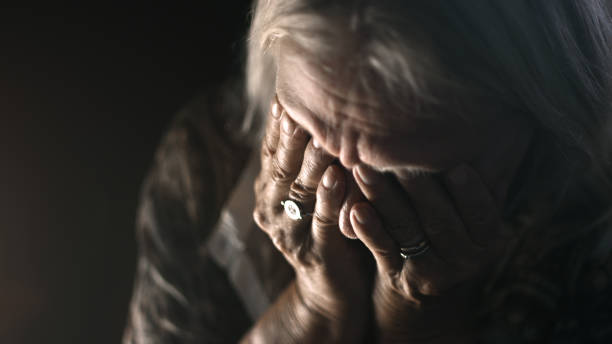Health
What Are The Injury-Related Issues Among Seniors
As people age, their bodies grow more prone to damage. Seniors are more susceptible to injury from falls, accidents, and other occurrences. These injuries can be serious, resulting in hospitalization, disability, or even death. Understanding injury-related issues among seniors is critical for healthcare providers, caregivers, and family members.
In this article, we will talk about the common types of injuries, risk factors, and safety measures, so you can stay safe as you age.

Prevalence of Injuries Among Seniors
Injuries are a major issue for seniors, and their frequency rises with age. According to the Centers for Disease Control and Prevention (CDC), falls are the largest cause of injury among older adults, with one out of every four seniors aged 65 and up falling each year. Furthermore, falls account for more than 95% of hip fractures in seniors.
Other common injuries among elderly include burns, wounds, and bruising. These injuries can occur as a result of incidents at home, such as cooking, cleaning, and bathing, or when participating in outside activities like gardening and walking.
Seniors with chronic diseases including arthritis, osteoporosis, and Parkinson’s disease are more likely to fall and sustain injuries. Furthermore, seniors who take certain medications, such as sedatives and antidepressants, may have dizziness and poor balance, increasing their risk of falling.
Preventing injuries in seniors necessitates a diverse approach that includes regular exercise, home improvements, and medication management. Seniors can also benefit from frequent check-ups with their healthcare providers to identify potential fall hazards and other health issues.

Common Types of Injury-Related Issues
Seniors are more likely to be injured because of characteristics such as reduced mobility, balance, and vision. Here are some of the most prevalent forms of injuries that seniors face:
Falls
Falls are the most common cause of injury among elderly. Seniors are more likely to fall as a result of poor balance, muscle weakness, and pharmaceutical side effects. Falls can cause significant injuries, including fractures, head traumas, and lacerations.
Fractures
Fractures are a common injury among the elderly, especially in the hip, spine, and wrist. These fractures can be caused by a fall or osteoporosis, a condition in which bones become weak and brittle.
Burns
Seniors are more likely to suffer burns due to diminished heat sensitivity and delayed reaction times. Burns can be produced by hot liquids, culinary utensils, and heating elements.
Poisoning
Seniors are also more likely to be accidentally poisoned as a result of drug errors, mislabeling, and dosage misunderstanding. Poisoning can lead to major health issues, including death.
Understanding the different sorts of injuries that seniors sustain allows caregivers and family members to take preventative measures to keep elders safe and healthy.

Risk Factors for Senior Injuries
Seniors frequently sustain injuries, which can have catastrophic repercussions. Understanding the risk factors for elder injuries can help you avoid them.
Age-Related Physical Changes
Physical changes occur with aging, increasing the chance of injury. These alterations include blurred vision, hearing loss, impaired balance and coordination, and diminished muscle strength. Seniors may also lose bone density, leaving them more susceptible to fractures.
Chronic Health Conditions
Seniors with chronic health conditions, such as arthritis, diabetes, or heart disease, may be more susceptible to damage. These diseases can impair mobility, balance, and coordination, making falls more likely.
Medication Side Effects
Medications can cause adverse effects that raise the likelihood of damage. For example, some drugs can produce dizziness, drowsiness, or confusion, increasing the risk of falling. Seniors who take many medications may have a higher risk of harmful drug interactions.
Environmental Hazards
Environmental risks might potentially raise the risk of injury for elders. These dangers include uneven floors, insufficient illumination, and congested passageways. Extreme weather conditions, such as ice or heat waves, may further raise the risk of injury for seniors.
Understanding these risk factors enables seniors and their caregivers to take precautions to reduce the chance of injury and enhance safety. This may include making changes to the home environment, managing chronic health issues, and consulting with a healthcare specialist about prescription regimens.

Prevention and Safety Measures
Home Safety Modifications
Making home changes is one of the most efficient strategies to prevent senior injuries. This can involve placing grab bars in the bathroom, putting non-slip mats in the shower and bathtub, and ensuring that there is enough illumination around the house. Other adjustments may include adding handrails to staircases, replacing loose rugs or carpets, and ensuring that any electrical cords are securely fastened and out of the way.
Physical Activity and Strength Training
Regular exercise and strength training can help seniors maintain their balance, flexibility, and overall physical well-being. This can assist to avoid falls and other injuries. Seniors should contact with their healthcare professional before beginning any new exercise regimen. They may also benefit from consulting with a physical therapist or personal trainer to build a safe and effective workout regimen.
Medication Management
Seniors may be at a higher risk of harm due to drug side effects or interactions. Seniors should keep an up-to-date list of any medications they take and communicate this information with their healthcare physician. They should also verify that they are taking their drugs as prescribed, without skipping doses or exceeding the appropriate quantity.
Public Health Interventions
Public health initiatives, such as flu shots and pneumonia vaccines, can help elders avoid sickness and damage. Seniors should stay up to date on recommended immunizations and follow public health measures, such as washing their hands frequently and avoiding close contact with others during flu season.
Seniors can lower their risk of injury while also maintaining their independence and quality of life by following these prevention and safety practices.
Effects of Injuries on Senior Health
Seniors are more likely to be injured due to age-related physical changes. Injuries can have a serious influence on the health and well-being of elders. This part will go over the short- and long-term implications of injuries, as well as the mental health effects that seniors may face.
Short-Term Consequences
In the short term, injuries can result in pain, discomfort, and reduced mobility. Seniors may have trouble performing daily tasks including bathing, dressing, and cooking. Injuries can frequently need hospitalization, which can be especially difficult for elders. Hospitalization can create stress, anxiety, and disorientation, which can impede the rehabilitation process.
Long-Term Disability
Injuries can potentially cause long-term incapacity in elders. Chronic pain, reduced mobility, and impaired cognitive function are all possible outcomes of an injury. Seniors with impairments may require assistance with daily activities, which can be emotionally and financially draining for both them and their family.
Mental Health Effects
Injury-related issues can also have a serious influence on seniors’ mental health. Depression, anxiety, and post-traumatic stress disorder are all prevalent mental health problems that seniors may face following an injury. These mental health concerns can hinder the rehabilitation process and reduce quality of life.
To summarize, injuries can have a substantial influence on the health and well-being of elders. Short-term repercussions include pain, discomfort, and reduced movement, and long-term implications can lead to chronic pain and disability. Seniors may also suffer from mental health concerns as a result of their injury. It is critical to take precautions to avoid injuries and to give elders with the assistance they require to recover from injuries that occur.
Healthcare System Challenges
Emergency Response
Seniors are more likely to get injury-related issues emergency medical intervention. However, the healthcare system confronts difficulties in providing prompt and effective emergency care to seniors. This is due to a variety of circumstances, including restricted finance, a shortage of skilled medical workers, and inadequate infrastructure. These obstacles might lead to a delayed or poor emergency response, which can have major ramifications for elders’ health and well-being.
Rehabilitation Services
Seniors who have sustained injury-related issues frequently require rehabilitation treatments to help them recuperate. However, the healthcare sector confronts difficulty in providing effective rehabilitative treatments to the elderly. These challenges include limited access to rehabilitation facilities, a scarcity of skilled rehabilitation experts, and insufficient insurance coverage for rehabilitation services. These problems might lead to delayed or inadequate rehabilitation services, which can be detrimental to elders’ recovery.
Cost of Care
The cost of healthcare is a major problem for seniors, especially those who have had injuries. The healthcare system confronts issues in delivering inexpensive care to elders, which can leave them unable to receive the treatment they require. This is due to a variety of causes, including increased healthcare expenses, restricted insurance coverage, and insufficient government support for healthcare services. These challenges might leave seniors unable to afford the care they require, which can have major ramifications for their health and well-being.
Caregiver Support
Seniors who have had injury-related issues frequently seek assistance from caregivers to recover. However, the healthcare system confronts difficulties in providing enough support to caregivers. These issues include limited access to caregiver support services, a scarcity of trained caregiver experts, and insufficient insurance reimbursement for caregiver services. These difficulties can make caregivers unable to provide the assistance that seniors require, which can have a negative influence on their recovery.

Legal and Ethical Considerations
Elder Abuse
Elder abuse is a severe problem among the elderly, and it can take many different forms, including physical, emotional, sexual, and financial abuse. Healthcare providers should be aware of the indicators of elder abuse and report any suspected occurrences to the proper authorities. In addition, healthcare providers should collaborate with their patients to create a plan to avoid elder abuse and ensure that they have access to the services they require to keep safe.
Self-Neglect
Self-neglect is another issue that healthcare personnel should be aware of when working with the elderly. This can include failing to maintain personal cleanliness, not taking prescribed medications, and not eating or drinking enough. Healthcare practitioners should collaborate with their patients to address any self-neglect issues and devise a strategy to guarantee that they receive the care and assistance they require.
Consent to Treatment
Consent to treatment is an important consideration when working with elders, especially those who may have cognitive or communication difficulties. Healthcare practitioners must ensure that their patients understand the risks and benefits of any proposed treatment and can give informed consent. Furthermore, healthcare practitioners must be aware of any legal or ethical implications when working with patients who are unable to express informed permission.
Insurance and Liability
Insurance and liability concerns are particularly relevant when working with elderly. Healthcare practitioners must ensure that their patients have adequate insurance coverage to pay for their care and that they are not held liable in the event of any unfavorable results. Furthermore, healthcare providers must be aware of any potential legal or ethical difficulties while working with uninsured or underinsured patients.
Conclusion
To summarize, addressing injury-related issues among seniors is an important part of improving their overall well-being and quality of life. As the population ages, it becomes increasingly important to identify and manage the risks connected with falls, accidents, and other injuries. Implementing preventive measures, creating a safe living environment, and encouraging regular physical exercise can greatly reduce the number of injuries among seniors. Furthermore, raising awareness and education about the need of balance, mobility, and accessible living environments can help to ensure a safer and healthy aging process. By addressing senior safety and adopting holistic solutions, we can create a supportive atmosphere in which elders can age gracefully while remaining active and independent.
Journey of self discovery


